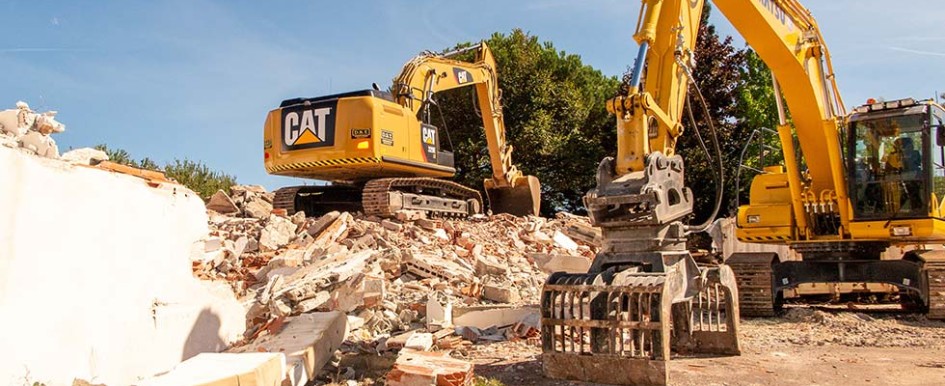
Rental is a relatively young industry, and it’s continuing to grow each year, with more contractors renting than ever before. Even with supply chain issues and labor shortages, U.S. equipment rental revenue, including both construction equipment and small tool, is expected to grow by 11.1% to reach nearly $56 billion in 2022, according to the latest quarterly forecast released by American Rental Association (ARA). In the early days of rental, it was experimental and full of optimism. Repair shops began developing their rental business styles while looking for new opportunities during times of uncertainty.
Rental was a new method of business and considered a last-resort option by contractors. However, as the industry has progressed, the rental perspective has shifted.
Over the last 20 years, contractors have started relying on the benefits and business advantages of renting versus owning. Equipment has gotten more complex, and rental partners are available to help.
Evolving Changes Bring Higher Efficiencies
Rental companies have become more of a partner within the construction industry than ever before. Why? Because the shifting perspective of rental has allowed them to.
The trust between rental businesses and contractors allows rental stores to stock equipment inventory in advance knowing the demand will fulfill the investment.
Going from a backup option to an integral part of the plan has provided more business, revenue and growth opportunities for both rental businesses and contractors.
Today, more than 50% of equipment on a jobsite is rented. The younger generation of contractors use the benefit of not having to store large equipment and transfer it from jobsite to jobsite to their advantage.
They’re more comfortable with the idea of access over ownership since they’ve been around the sharing economy most of their lives. The equipment will be available when they need it, so why go through the hassle of buying?
The responsibility of maintenance and certain liabilities also falls to the rental provider and is removed from the contractor’s plate. Rental equipment is often safer as well, simply because it’s newer. Manufacturers are constantly upgrading safety features. A gritty, 20-year-old excavator might perform well, but it still can’t compete with the newest models in terms of safety and operator comfort.
Simplifying Business Processes
As businesses grow, the demand for more equipment increases — and so does the management behind securing that equipment. Some of that work can be transferred from a contractor or business owner to a preferred rental partner, though. Let them know what’s needed and when, and they’ll worry about the logistics. By trusting the expertise of a rental partner, contractors can gain access to the equipment they need for long-term or short-term projects, allowing them to carry out any project.
Renting equipment decreases stress related to major labor and equipment shortages, too. Instead of hiring more people, maybe a piece of rental equipment can make up the ground. Instead of ordering new equipment and wondering if it will arrive on time, choose rental to ensure it will. Rental stores already have what contractors need in stock and ready for the jobsite.
No High Initial Cost
There’s no denying it, equipment is an investment. One piece of expensive machinery can only perform a limited number of duties — and what if you only use it occasionally? What if the work shifts and that machine becomes obsolete?
Contractors are realizing, though, that rental is a way around that. Renting an item can be treated as a “test drive” for certain equipment or brands. The lower initial investment allows more flexibility with the types of jobs taken on, too. Rental provides the freedom of having a specific focus one day and another the next, without keeping a warehouse full of equipment.
As rental has become more popular, the price point of renting has become more efficient as well. The retail cost of a backhoe has increased exponentially over the years, but the rental cost has not, leveling the playing field between the two.
Future for Growth
Rental solves several challenges and will continue to solve more challenges for a larger portion of construction businesses. Viewing rental stores as a partner and vital piece of the puzzle will take the burden off contractors, allowing them to focus their talents on projects instead of logistics. It has already started to do so. Many contractors weigh the pros and cons between buying and renting daily and are also working that into their long-term fleet plans.
Renting equipment results in 30% to 60% fewer carbon emissions over the lifetime of a piece of equipment over ownership. The trend of sustainability is highlighted in the emergence of electrified and minified machinery, and the increased popularity of rental. Electrified and battery-powered equipment is expensive and complicated, making it much easier to rent than to own. That equipment is making its way into rental fleets because of that, allowing contractors to rent those products to help meet their sustainability goals.
Technology will only continue to evolve. In the realm of remote diagnostics and telematics, rental companies can currently monitor a fleet remotely, and in some cases, allow contractors to monitor a rental fleet next to their own. Opening up more of the data will help pinpoint where efficiencies and inefficiencies lie.
